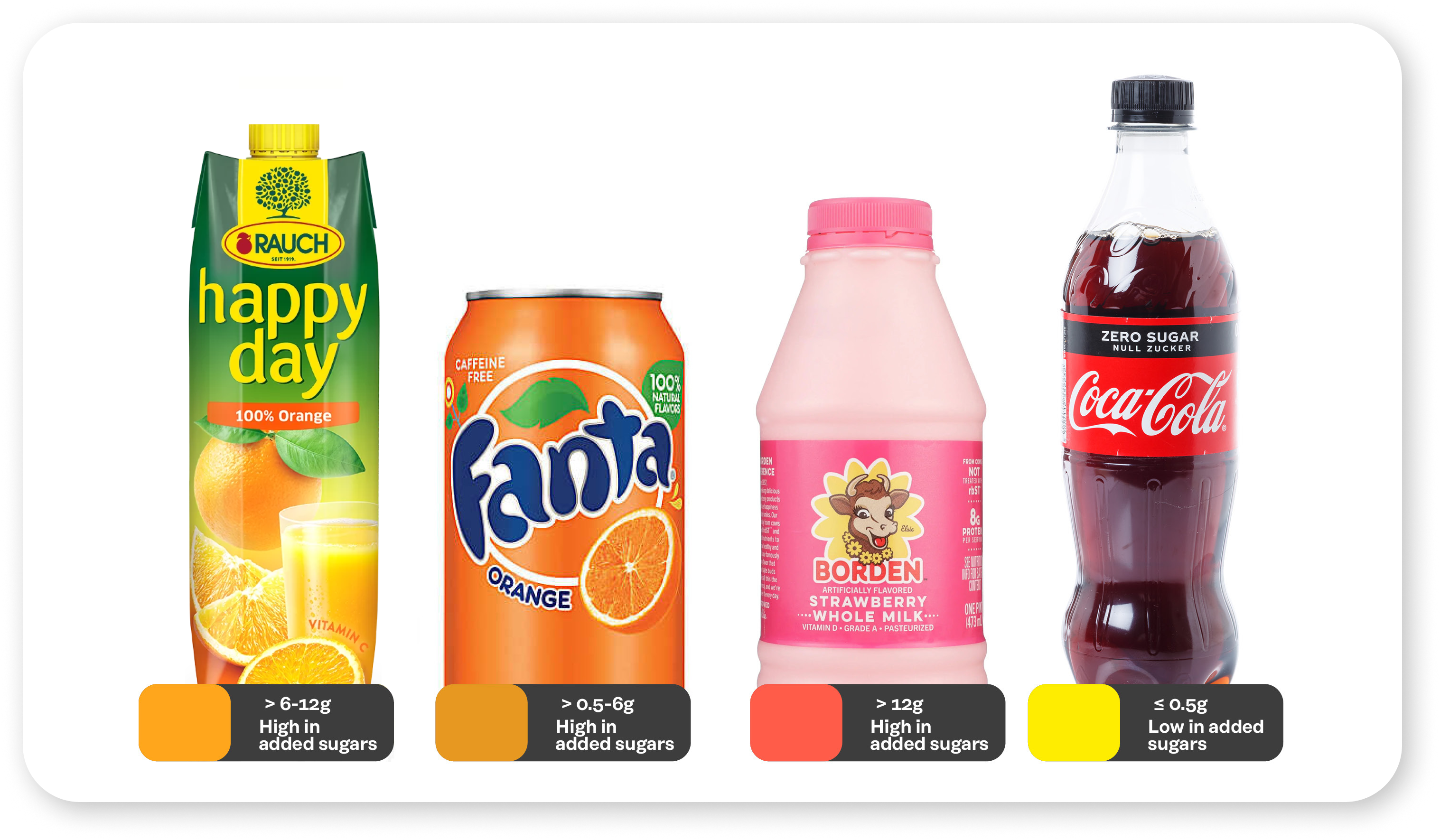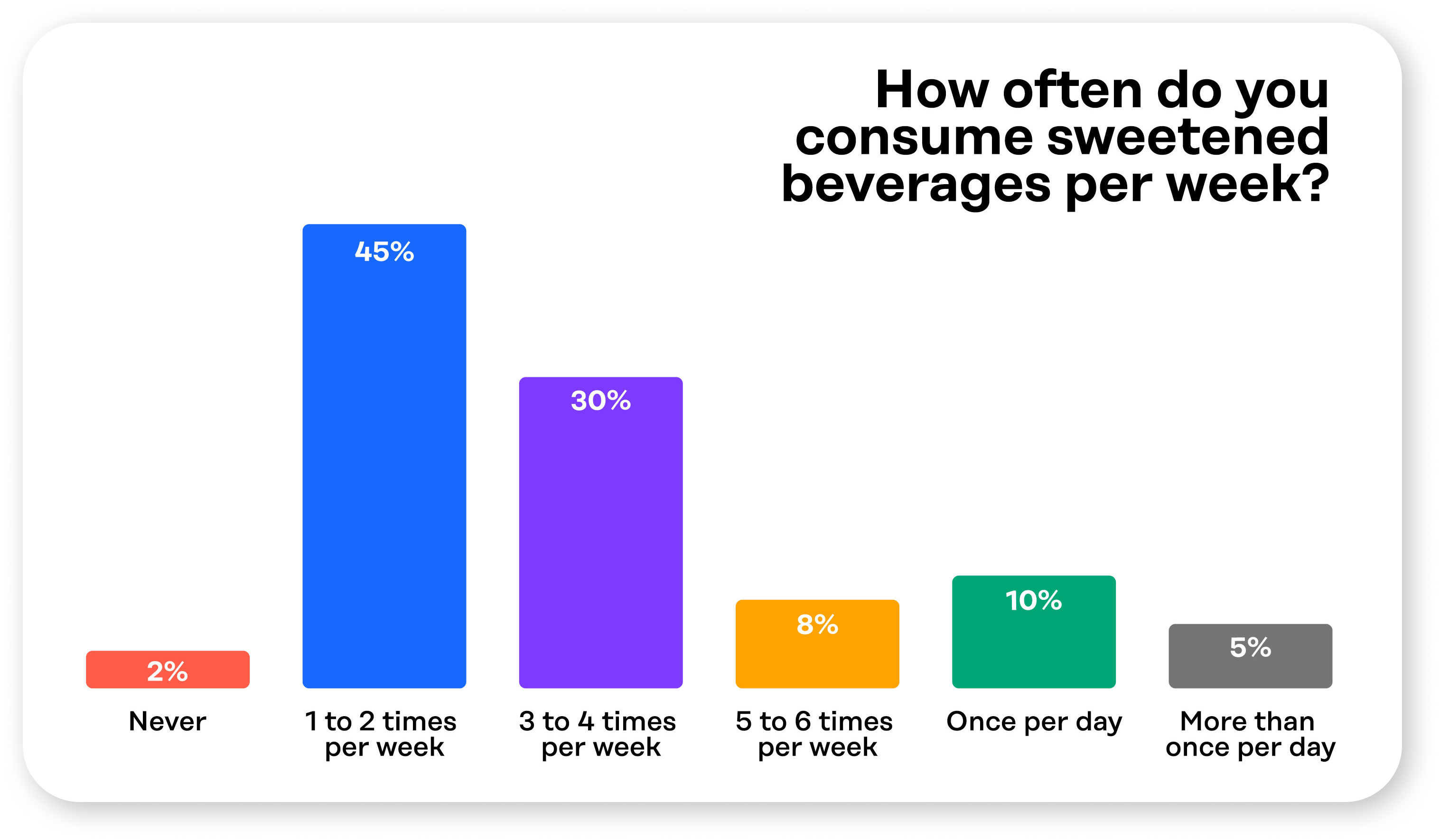Challenge
A global foundation dedicated to improving nutrition by promoting the consumption of safe and nutritious food teamed up with Premise to run a social and behavior change (SBC) task in Indonesia. The objective was to understand consumer behaviors based on visual cues and their impact on consumer decision-making at the point of purchase of sugar-added beverages, including teas, juices, and sodas.
Solution
To understand whether sugar labels and product perceptions influence consumers to select the product they want to buy, the foundation utilized Premise’s extensive network of Contributors to conduct a large- scale set of surveys across eight provinces of Indonesia. The survey specifically targeted young adults, acknowledged as the prominent consumers of sugary drinks. The survey questions were designed to determine the following:
- Probability of consuming beverages based on product labeling
- Identification of beverages perceived to have more or less sugar
- Evaluation of the perceived health implications of daily consumption of such products
- Likelihood of purchasing the shown products in the following week
- How the amount of added sugar affects consumer sentiments, either encouraging or discouraging consumption
- Frequency with which sugar labels influence beverage purchase decisions
Findings
The survey obtained 4,782 responses through Premise’s app and revealed compelling insights into consumer behavior. Close to 60% of respondents stated they noticed the new sugar labels in their recent shopping experiences, and of those, 80% said they use the labels “sometimes, often, or always” while shopping. However, of those respondents who noticed the sugar labels, only 45% “sometimes” checked the sugar content when choosing sugar-sweetened drinks.
Over 90% of respondents said they consume at least one sugar-sweetened beverage a week, making them a good audience for testing the effectiveness of sugar labels. Overall, the survey results indicated that people are receptive to sugar labels and can more accurately determine high sugar content when color-coded labels are added to the beverage label compared to when no sugar labeling is added.
Implications
Access to the valuable observations from Premise allowed the customer to:
- Understand the frequency of sugary beverage consumption across Indonesia.
- Gain insights into the impact of packaging, colors, and branding on purchase decisions and how they can drive effective marketing and behavior change campaigns.
- Advise partnering grocery stores on effective labeling strategies that will aid consumers in making healthier purchase decisions.
Conclusion
Given Indonesia’s ranking as the third-highest consumer of sugar- sweetened beverages in Southeast Asia, the survey’s findings hold immense importance for researchers, health professionals, students, and decision- makers. These insights can help enhance public awareness of sugary beverage consumption and its associated impacts and open the door for targeted interventions to promote healthier dietary choices.

